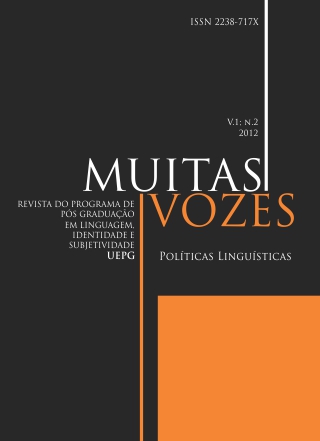Why foreign language teachers need to have a multilingual outlook and what that means for their teaching practice. DOI: 10.5212/MuitasVozes.v.1i2.0002
Résumé
Foreign language teachers have traditionally been trained to think of themselves as teaching one L2 to speakers of one L1. With the advent of globalization and the increased mobility of humans, goods and capital, the multilingual and multicultural nature of national societies has become both more prevalent and more visible. Language classrooms are populated nowadays with students who don’t necessarily speak a common national language and who speak a variety of second, immigrant or heritage languages. They are multilingual not only in the strict sense of being equally fluent in more than one linguistic code, but also in the sense that they have different outlooks, different upbringings, they have been socialized in different ways. They have less and less of a consensus on what is an appropriate, polite behavior, nor even what is expected in school.
Téléchargements
Téléchargements
Comment citer
Numéro
Rubrique
Licence

Este obra está licenciado com uma Licença Creative Commons Atribuição 4.0 Internacional.
Transferência de direitos autorais: Caso o artigo submetido seja aprovado para publicação, JÁ FICA ACORDADO QUE o autor AUTORIZA a UEPG a reproduzi-lo e publicá-lo na REVISTA MUITAS VOZES, entendendo-se os termos "reprodução" e "publicação" conforme definição respectivamente dos incisos VI e I do artigo 5° da Lei 9610/98. O ARTIGO poderá ser acessado tanto pela rede mundial de computadores (WWW - Internet), como pela versão impressa, sendo permitidas, A TÍTULO GRATUITO, a consulta e a reprodução de exemplar do ARTIGO para uso próprio de quem a consulta. ESSA autorização de publicação não tem limitação de tempo, FICANDO A UEPG responsável pela manutenção da identificação DO AUTOR do ARTIGO.



